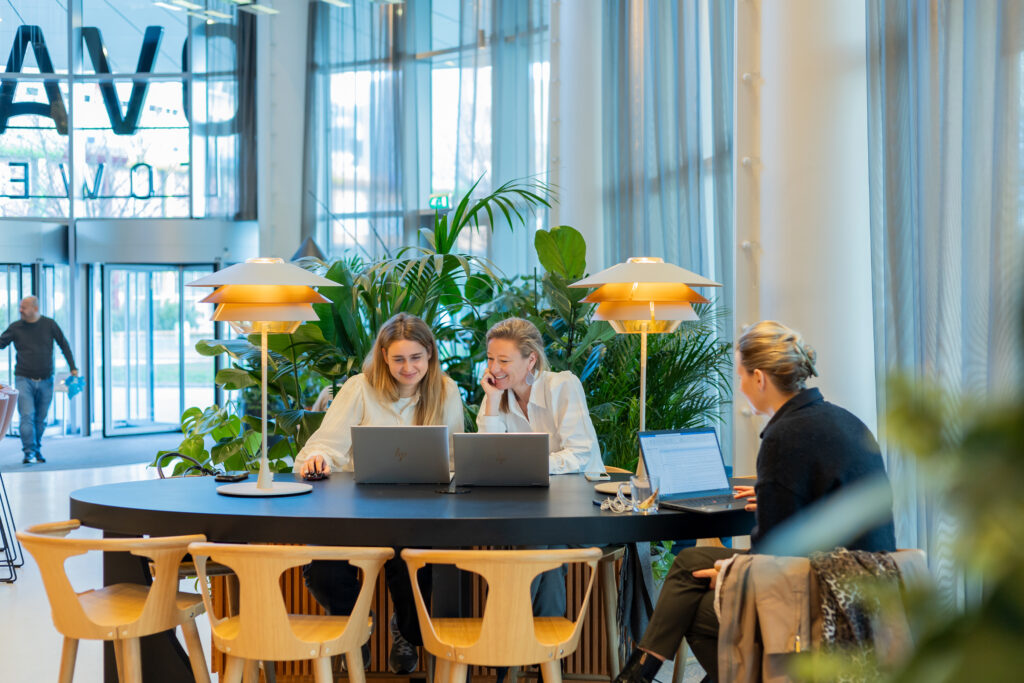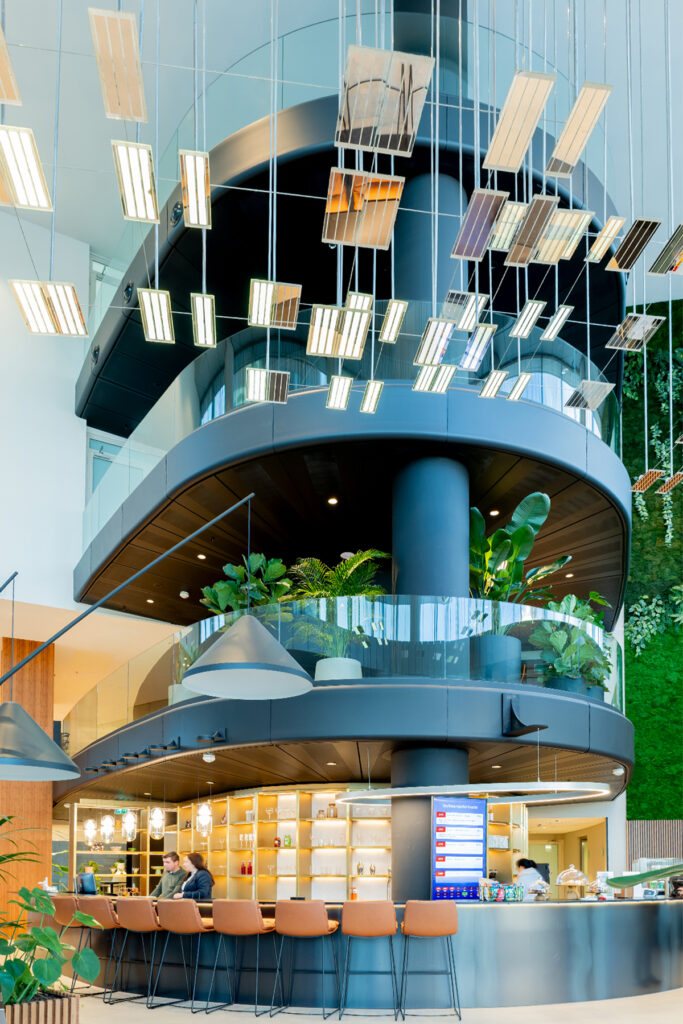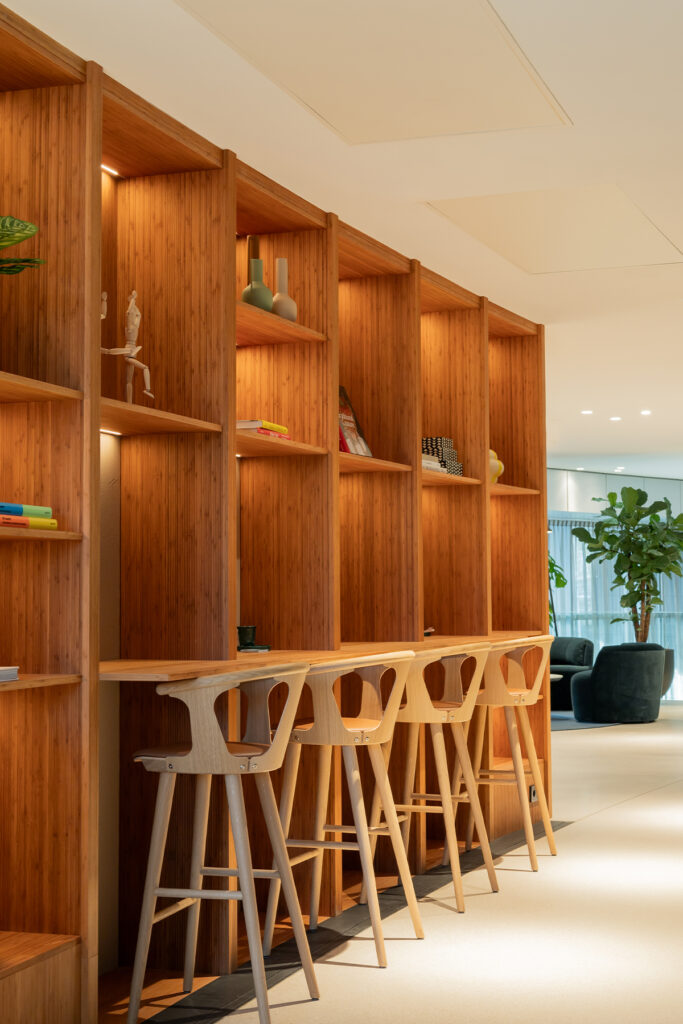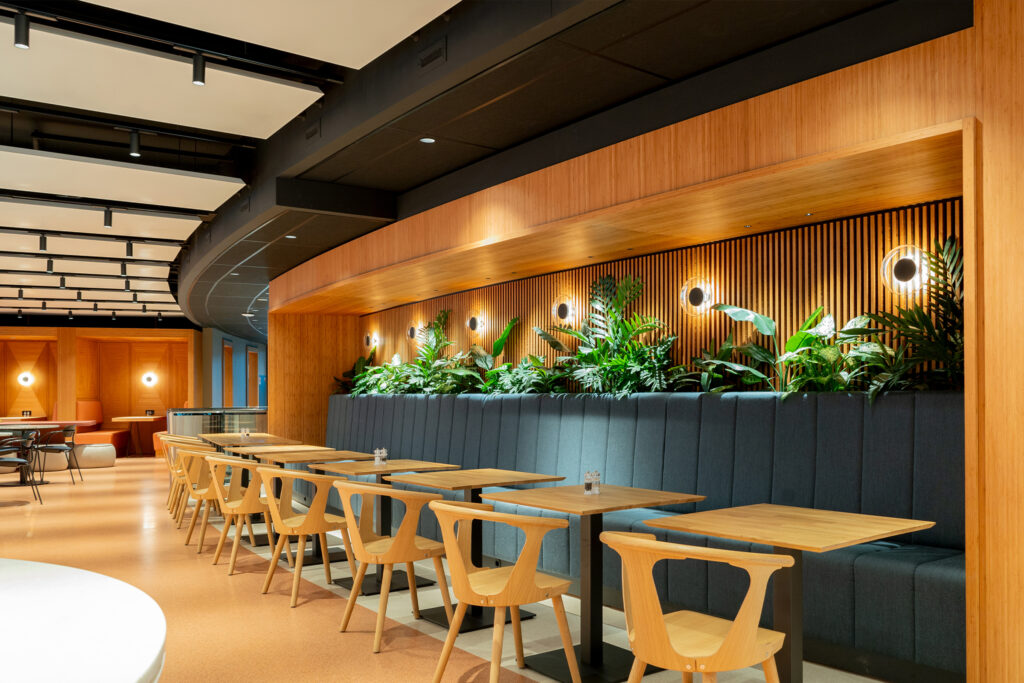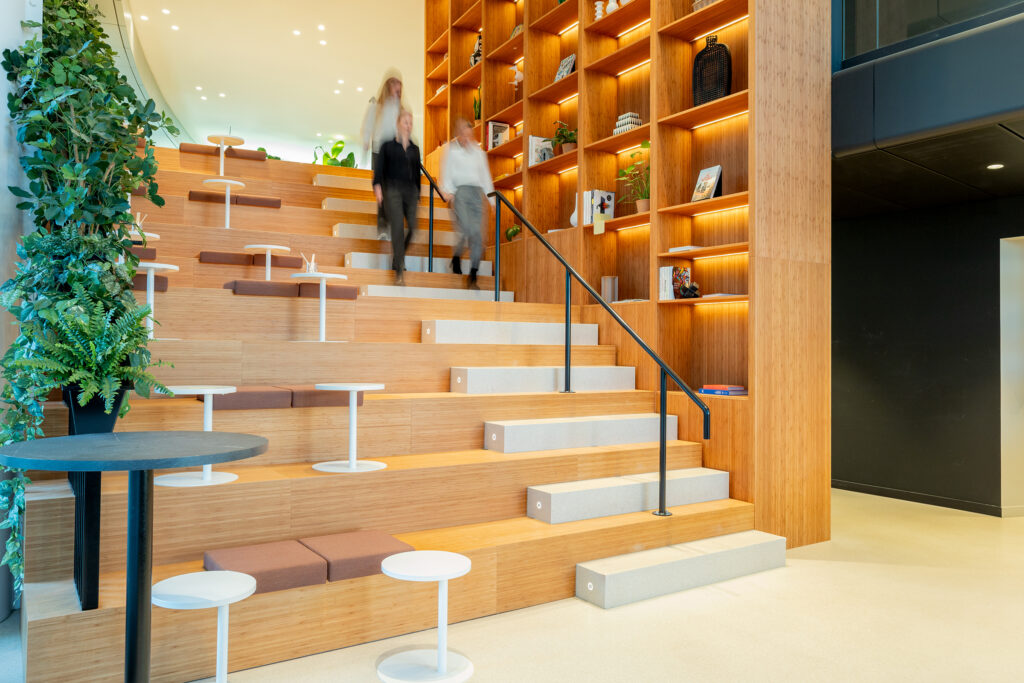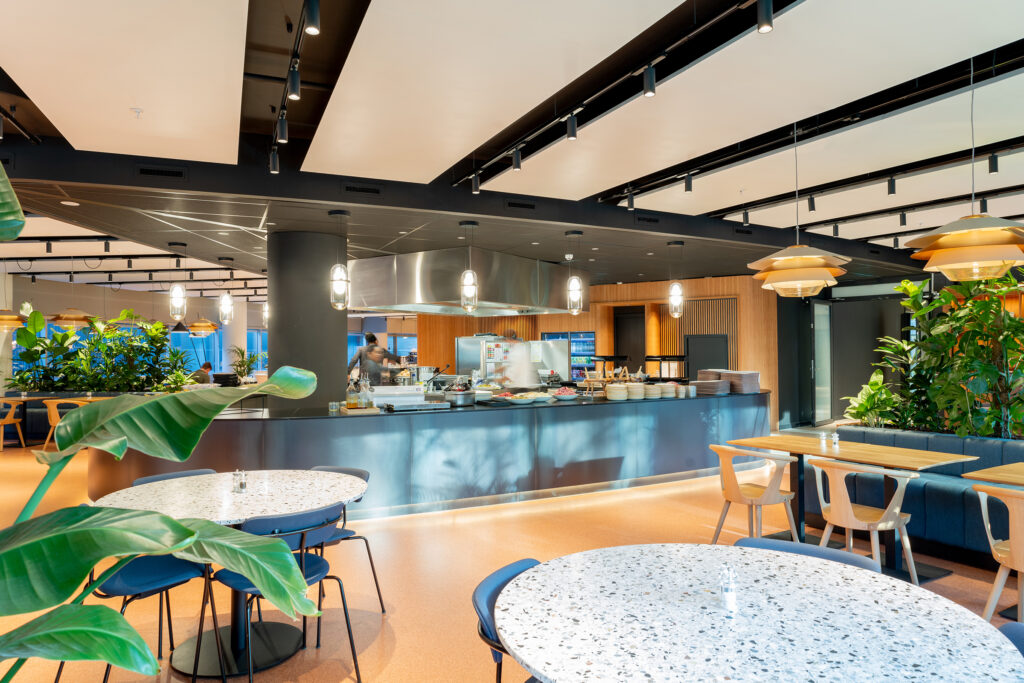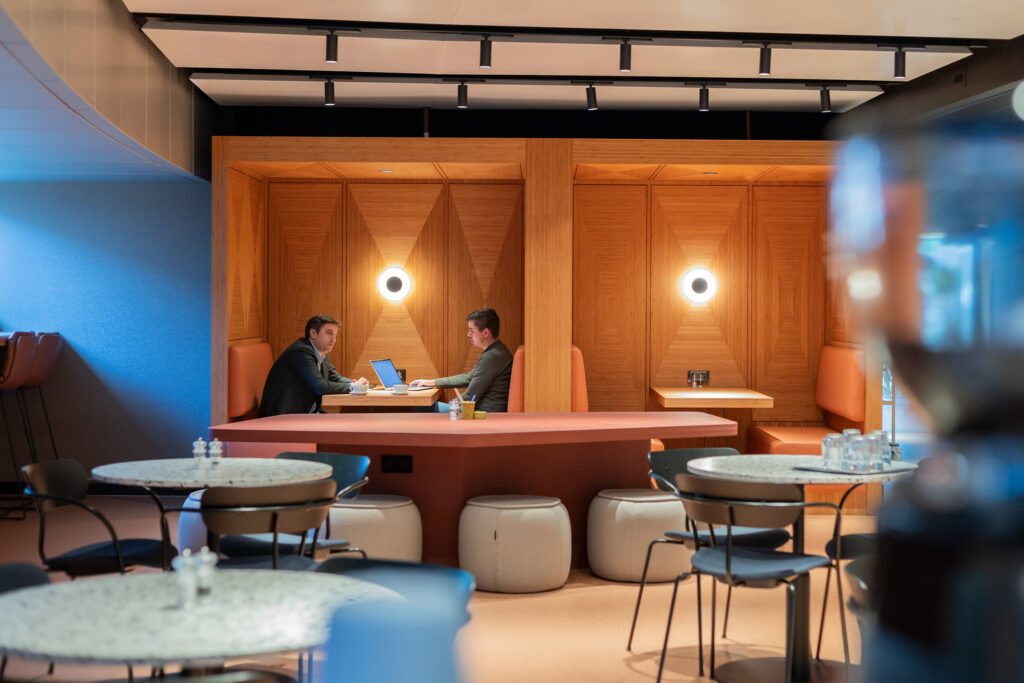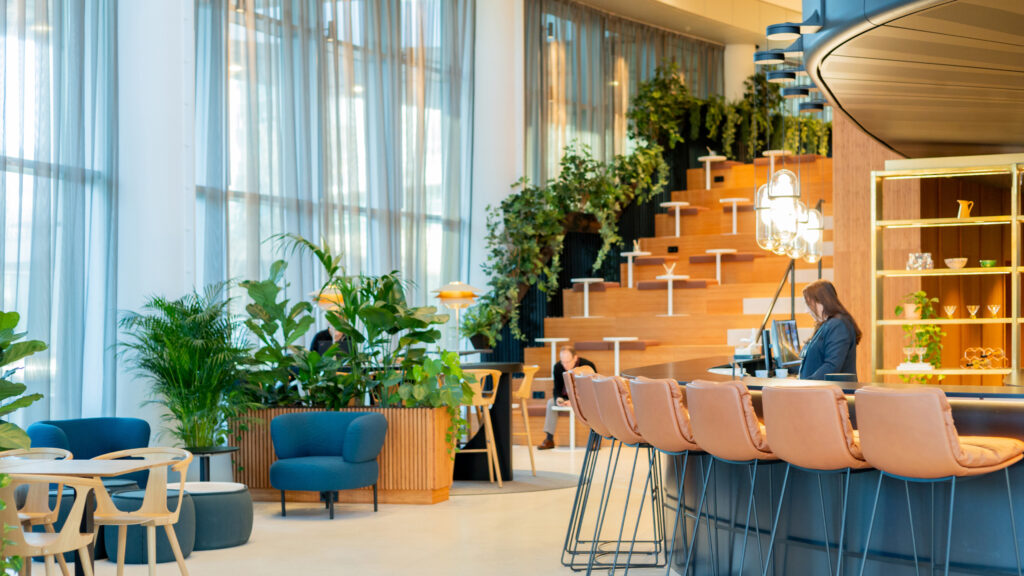
Client
Rubens Capital
Location
Amsterdam, The Netherlands
Size
25,000 m2
Completion
2023
Collaborators
Hospitality Group
Compass Group
CBRE
Oval Tower, located in the ArenA Boulevard area in Amsterdam-Zuidoost, stands at an impressive 94 meters high, showcasing its iconic oval shape across 24 floors and spanning 25,000 square metres. The primary objective of its most recent renovation was to redefine the building as a collaborative space that nurtures interaction among occupants through shared facilities and services.
By introducing the concept of a Vertical Campus, the tower now operates as a dynamic hub with a multifunctional bar and reception, diverse work spots, lounge areas, and two restaurants. Moreover, the common areas are already being used by local NGOs to enhance social cohesion in the neighbourhood.
The atrium, extending up to the third floor, features a large green wall, creating a connection between nature and the built environment. The oval shape, a recurring theme, is reflected in the design throughout the building. But the standout feature of the renovation is the staircase that generates a visual and physical link between the ground floor and the first floor.
Sustainability is a key focus, with bamboo being the primary material for all fixed furniture, ensuring an environmentally friendly approach. In a strategic move, the restaurant has been relocated from the 12th floor to the ground and first floors. The activation of the plinth has significantly increased the use of the space, facilitating convenient meetings between tenants and their visitors.
